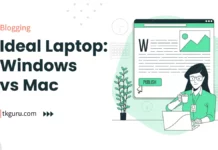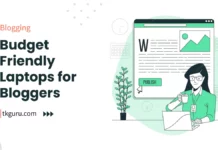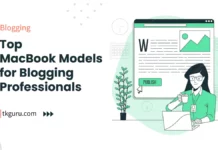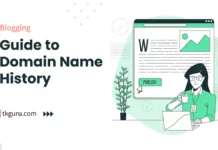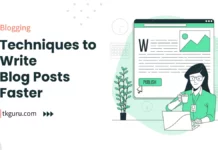Advertisements
Ratings
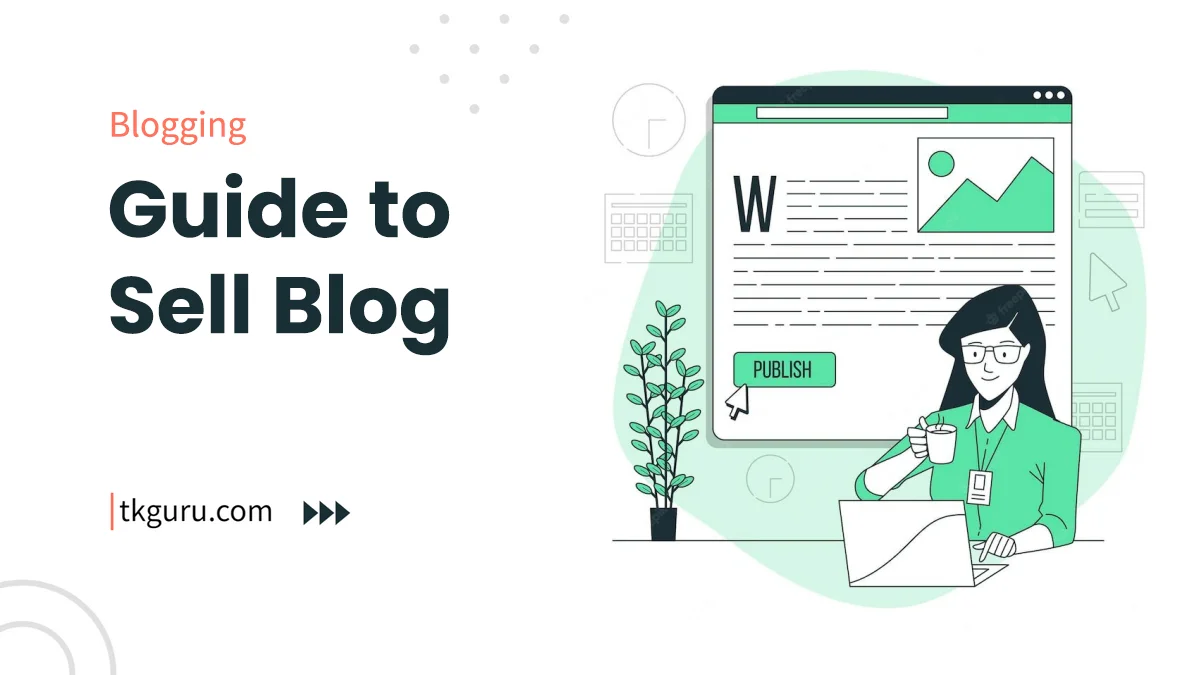
How to Sell Blog 2023 – In the dynamic landscape of online entrepreneurship, the decision to sell your blog is an important step that requires careful consideration and strategic planning.
Whether you’re moving on to new ventures or looking to capitalize on your blog’s success, the process of selling your blog demands a methodical approach to ensure a seamless transition.
This comprehensive guide will walk you through the intricacies of how to sell your blog effectively, covering everything from preparation and valuation to negotiations and post-sale considerations.
Contents
- 1. Preparing Your Blog for Sale
- 2. Gathering Essential Documentation
- 3. Identifying Potential Buyers
- 4. Setting an Appropriate Selling Price
- 5. Preparing a Compelling Sales Pitch
- 6. Choosing the Right Platform or Broker
- 7. Negotiating and Closing the Deal
- 8. Navigating the Transition Period
- 9. Legal and Financial Considerations
- 10. Ensuring a Positive Reputation Post-Sale
- Case Study: Jane’s Journey to Selling Her Travel Blog
- Conclusion: Successfully Selling Your Blog
- How to Sell Blog FAQs
1. Preparing Your Blog for Sale

Before you embark on the journey of selling your blog, it’s crucial to prepare it for the transaction.
This involves evaluating your motives for selling, assessing the value of your blog, and enhancing its appeal to potential buyers.
1.1 Evaluating Your Motives for Selling
Understanding why you want to sell your blog is the foundation of a successful sale. Are you looking to pursue new opportunities, or do you want to capitalize on the value you’ve built? Clear motives will guide your decisions throughout the process.
1.2 Assessing Blog Value and Assets
Knowing the value of your blog is essential for setting an appropriate selling price. Compile financial records, income reports, and other data that showcase your blog’s revenue-generating capabilities.
Additionally, list the assets associated with your blog, such as domain names, social media accounts, and any proprietary tools you’ve developed.
1.3 Cleaning Up and Enhancing Blog Content
Before presenting your blog to potential buyers, ensure that your content is polished and up-to-date.
Remove outdated posts, correct any errors, and consider enhancing the overall aesthetics of your blog’s design. A well-maintained blog demonstrates your commitment to quality.
| Actionable Tips |
|---|
| Conduct a thorough content audit to identify outdated or irrelevant posts. |
| Optimize images, formatting, and readability to enhance the overall user experience. |
By taking the time to prepare your blog for sale, you create a more attractive proposition for potential buyers, increasing the likelihood of a successful transaction.
2. Gathering Essential Documentation
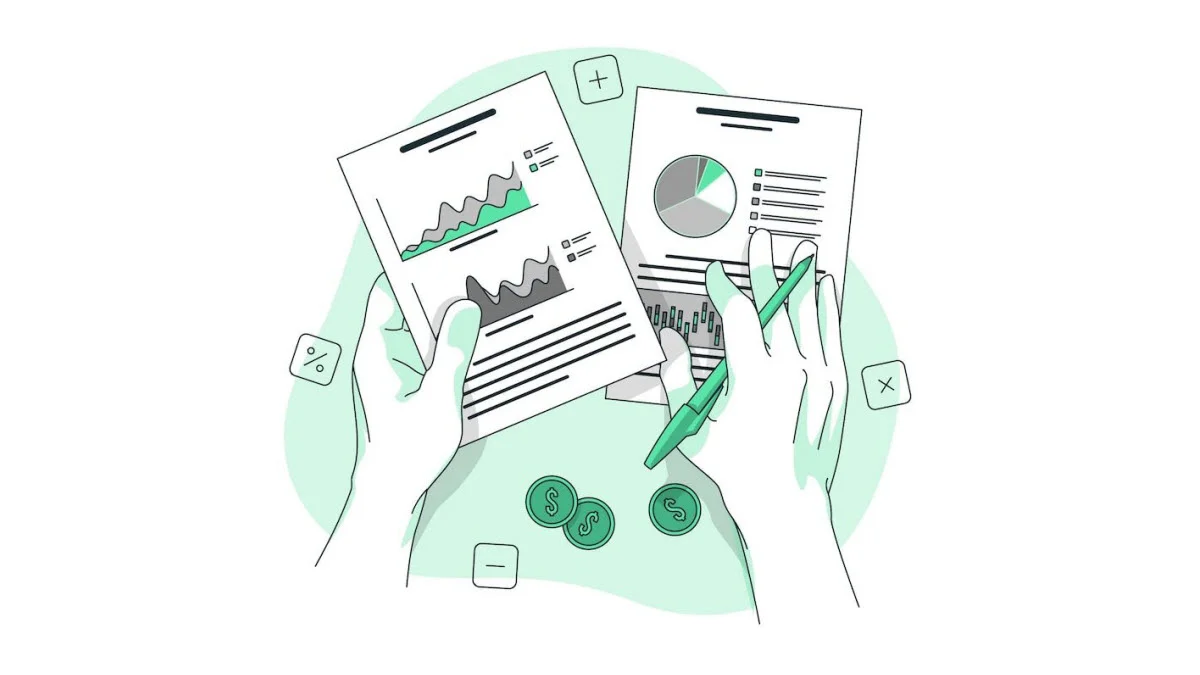
Once your blog is prepared for sale, the next step is to gather essential documentation that provides a comprehensive overview of your blog’s performance, audience, and monetization strategies.
This documentation serves as a valuable resource for potential buyers to make informed decisions.
2.1 Financial Records and Income Reports
Transparent financial documentation is crucial to establish the revenue-generating potential of your blog.
Collect records of your blog’s earnings, expenses, and profit margins over the past months or years.
This includes data from various monetization streams, such as affiliate marketing, sponsored content, and ad revenue.
| Table: Sample Financial Records (Monthly Revenue) |
|---|
| Month |
| Jan 2022 |
| Feb 2022 |
| Mar 2022 |
2.2 Traffic Analytics and Audience Demographics
Accurate traffic data offers insights into your blog’s popularity and reach. Provide information on monthly page views, unique visitors, bounce rates, and user engagement metrics.
Additionally, share demographic data about your audience, including their age, gender, location, and interests.
| Table: Sample Traffic Analytics (Monthly Metrics) |
|---|
| Month |
| Jan 2022 |
| Feb 2022 |
| Mar 2022 |
2.3 List of Monetization Strategies and Partnerships
Detail the various monetization strategies you’ve employed, such as affiliate programs, sponsored content, digital products, or e-commerce integration.
Include a list of your key partners and collaborations, showcasing your blog’s potential for generating revenue.
| Table: Sample Monetization Strategies and Partnerships |
|---|
| Monetization Strategy |
| Affiliate Marketing |
| Sponsored Content |
| Digital Products |
| E-commerce |
By compiling comprehensive documentation, you provide potential buyers with a clear understanding of your blog’s financial performance, audience reach, and growth potential.
This transparency builds trust and increases the attractiveness of your blog as an investment opportunity.
3. Identifying Potential Buyers

As you prepare your blog for sale, it’s essential to identify and understand potential buyers who may be interested in acquiring your blog.
Different types of buyers have distinct motivations and expectations, so tailoring your approach to each category is key.
3.1 Understanding the Types of Buyers
There are two primary categories of potential buyers: strategic buyers and financial investors.
- Strategic Buyers: These buyers are often bloggers or businesses operating within your niche. They see value in acquiring your blog to expand their online presence, gain access to your audience, or diversify their content offerings.
- Financial Investors: These individuals or entities are interested in blogs as investment opportunities. They may not be directly involved in your niche but are attracted to the revenue potential and growth prospects your blog offers.
3.2 Niche-Relevant Buyers vs. Investors
Depending on your blog’s niche and audience, you’ll need to determine whether niche-relevant buyers or investors are more suitable candidates.
- Niche-Relevant Buyers: If your blog has a dedicated audience and a strong online presence, niche-relevant buyers could be interested in tapping into your existing community.
- Investors: Investors are primarily interested in your blog’s financial performance. They seek consistent revenue streams and potential for growth.
3.3 Confidentiality and Protecting Sensitive Information
During the process of identifying potential buyers, it’s essential to maintain confidentiality, especially if you’re currently operating the blog.
NDA agreements (Non-Disclosure Agreements) can be employed to safeguard sensitive information until a serious buyer is identified.
| Actionable Tips |
|---|
| Research potential buyers’ backgrounds and motivations to tailor your approach. |
| Prepare a standard NDA template to ensure confidentiality during discussions. |
Identifying the right type of buyer and protecting sensitive information lay the groundwork for successful negotiations and a smooth transition.
4. Setting an Appropriate Selling Price
Determining the right selling price for your blog is a critical step in the selling process.
A well-priced blog attracts serious buyers and sets the stage for successful negotiations. There are several methods you can use to evaluate your blog’s value.
4.1 Valuation Methods: Earnings Multiplier, Traffic-Based, Asset Valuation
- Earnings Multiplier Method: This method involves calculating a multiple of your blog’s annual earnings. The multiple can vary based on factors such as niche, growth potential, and the buyer’s interests.
- Traffic-Based Method: Blog value can be determined by the volume and quality of traffic. Higher traffic blogs may command a higher price due to the potential for increased revenue.
- Asset Valuation Method: This method involves assessing the value of tangible and intangible assets, including domain names, email lists, proprietary tools, and existing content.
4.2 Balancing Realistic Expectations with Market Trends
While it’s natural to seek the highest possible selling price, it’s essential to balance your expectations with market trends and the blog’s performance.
Overpricing can deter potential buyers, while under pricing may not reflect the true value of your blog.
| Table: Sample Blog Valuation Using Earnings Multiplier Method |
|---|
| Annual Earnings |
| $50,000 |
| $70,000 |
| $90,000 |
| Actionable Tips |
|---|
| Research recent blog sales within your niche to understand market trends. |
| Be open to negotiation while maintaining a realistic pricing strategy. |
Setting a reasonable and well-justified selling price increases your chances of attracting serious buyers and expediting the sales process.
5. Preparing a Compelling Sales Pitch

Crafting a compelling sales pitch is essential to capture the attention of potential buyers and showcase the unique value of your blog.
Your sales pitch should highlight key achievements, growth potential, and the benefits of owning your blog.
5.1 Crafting an Engaging Blog Description
Your blog description should succinctly convey what your blog is about and why it stands out. Emphasize the niche, content focus, and any unique features that make your blog a valuable asset.
5.2 Highlighting Key Achievements and Potential
Share notable achievements your blog has attained, such as significant traffic milestones, partnerships with reputable brands, or media coverage.
Highlight the potential for growth, showcasing how a new owner can take the blog to the next level.
| Table: Sample Key Achievements and Growth Potential |
|---|
| Key Achievements |
| Featured in XYZ Magazine |
| Reached 100,000 Monthly Page Views |
| Collaborated with Leading Brands |
5.3 Presenting Growth Opportunities for Buyers
Demonstrate to potential buyers that there are untapped growth opportunities they can leverage.
Whether it’s exploring new content formats, expanding into related niches, or optimizing monetization strategies, showcasing potential avenues for growth enhances the blog’s appeal.
| Actionable Tips |
|---|
| Create a visually appealing media kit that encapsulates your blog’s achievements. |
| Use clear and compelling language to communicate the blog’s value proposition. |
A compelling sales pitch not only attracts buyers but also instills confidence in their decision to consider your blog for acquisition.
6. Choosing the Right Platform or Broker

Selecting the appropriate platform or broker to facilitate the sale of your blog can significantly impact the process’s efficiency and success. There are several options to consider, each with its benefits and considerations.
6.1 Self-Selling vs. Using a Broker
- Self-Selling: If you have experience in negotiating and legal matters, self-selling can save you brokerage fees. However, it requires a good understanding of the selling process and legal documentation.
- Using a Broker: A professional blog broker can provide expertise, market insights, and connections to potential buyers. They handle negotiations, paperwork, and ensure a smooth transaction.
6.2 Reputable Blog Marketplaces and Platforms
- Flippa: A well-known online marketplace for buying and selling websites and blogs.
- Empire Flippers: Specializes in selling established and profitable online businesses.
- FE International: A brokerage firm that focuses on the sale of digital businesses, including blogs.
6.3 Researching and Selecting a Trusted Broker
If you decide to work with a broker, thorough research is essential. Look for brokers with a proven track record in blog sales, positive client testimonials, and transparent fee structures.
| Table: Comparison of Self-Selling and Using a Broker |
|---|
| Aspect |
| Expertise Required |
| Time Commitment |
| Access to Buyers |
| Legal Expertise |
| Negotiation Handling |
| Transaction Safety |
| Actionable Tips |
|---|
| Research potential brokers thoroughly and check their references before committing. |
| Evaluate the costs and benefits of self-selling versus using a broker based on your situation. |
Choosing the right platform or broker streamlines the selling process and ensures that you’re making informed decisions every step of the way.
7. Negotiating and Closing the Deal
The negotiation and closing stage is a critical juncture in the blog selling process. Effective communication, transparency, and a clear understanding of terms are essential for a successful transaction.
7.1 Handling Initial Inquiries and Requests
As potential buyers express interest, be prepared to address their inquiries promptly. Provide information about your blog’s performance, traffic sources, and monetization strategies. Be open to answering questions and providing additional data as needed.
7.2 Disclosing Relevant Information Transparently
Transparency is crucial during negotiations. Disclose any challenges, risks, or potential issues that the buyer should be aware of. This approach builds trust and helps prevent misunderstandings down the line.
7.3 Negotiating Price, Terms, and Transition Period
Negotiations can cover various aspects, including the selling price, payment terms, handover process, and post-sale support.
Be prepared to find common ground and reach agreements that satisfy both parties’ needs.
| Table: Sample Negotiation Considerations |
|---|
| Aspect |
| Selling Price |
| Payment Terms |
| Transition Period |
| Non-Compete Clause |
| Actionable Tips |
|---|
| Be flexible during negotiations while ensuring your needs are met as well. |
| Document all agreements and terms in a written contract to avoid misunderstandings. |
Navigating negotiations with transparency and professionalism sets the stage for a smooth closing process.
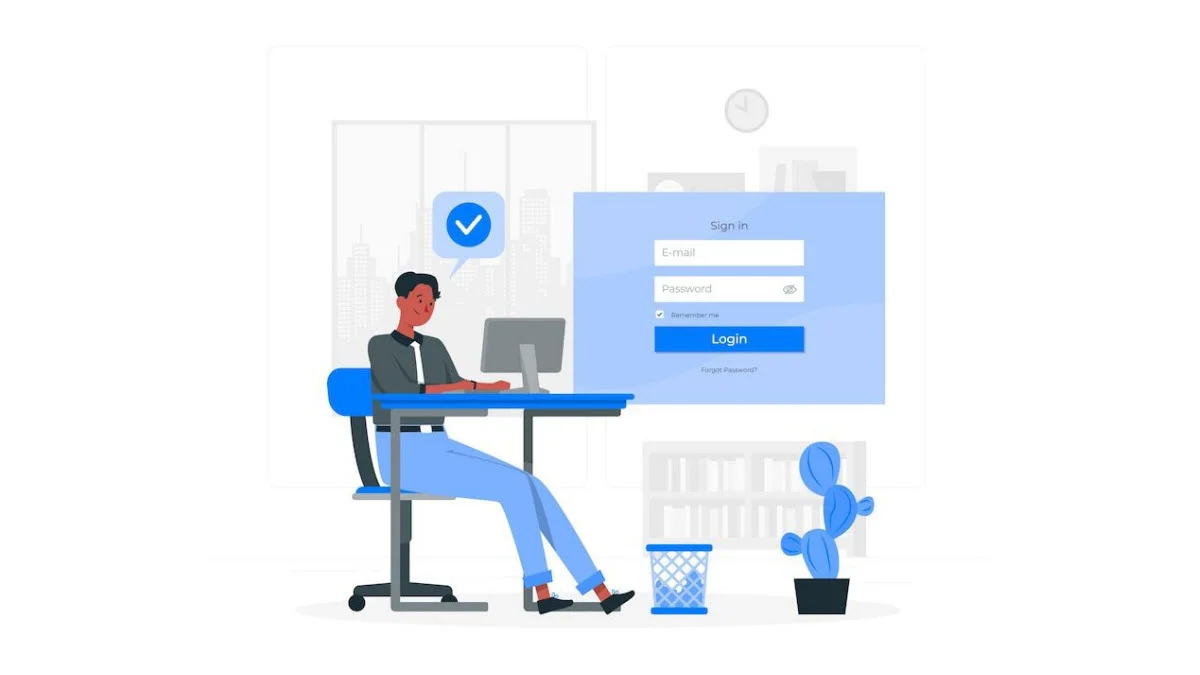
The transition period after the sale is a crucial phase that ensures a seamless handover of your blog to the new owner.
Clear communication and careful planning are essential to maintain the blog’s continuity and preserve its value.
8.1 Creating a Smooth Transition Plan
Develop a comprehensive transition plan that outlines the steps involved in transferring ownership.
This plan should cover tasks such as transferring domain ownership, updating admin access, and providing necessary documentation to the new owner.
8.2 Handing Over Logins and Admin Access
To facilitate a smooth transition, provide the new owner with all necessary login credentials, including website hosting, content management system (CMS), email accounts, and social media profiles. Ensure that all access is transferred securely.
8.3 Supporting the Buyer during Knowledge Transfer
As the previous owner, you possess valuable insights and knowledge about the blog’s operations and strategies.
Offer support to the new owner during the knowledge transfer process. This might include explaining the blog’s content strategy, marketing tactics, and growth initiatives.
| Table: Sample Transition Plan |
|---|
| Task |
| Transfer Domain Ownership |
| Provide CMS Access |
| Handover Social Media Accounts |
| Conduct Knowledge Transfer Session |
| Actionable Tips |
|---|
| Collaborate with the new owner to ensure a smooth knowledge transfer. |
| Offer ongoing support for a defined period to address any questions or concerns. |
A well-structured transition period ensures that the new owner can seamlessly take over operations and continue building on the blog’s success.
9. Legal and Financial Considerations
Navigating the legal and financial aspects of selling your blog is crucial to ensure a smooth and legally compliant transaction.
Involving legal and financial professionals can help protect your interests and facilitate a successful sale.
9.1 Drafting a Comprehensive Sale Agreement
A sale agreement is a legally binding document that outlines the terms and conditions of the sale.
It should cover the selling price, payment terms, transfer of assets, warranties, and any non-compete clauses.
Consulting with a legal expert is recommended to ensure the agreement is thorough and protects both parties.
9.2 Involving Legal and Financial Professionals
Engage the services of legal and financial professionals experienced in digital business transactions.
An attorney can review contracts, ensure compliance with relevant laws, and address any legal concerns. A financial advisor can provide guidance on tax implications and help structure payment terms.
9.3 Handling Tax Implications and Asset Transfer
Selling a blog can have tax implications, including capital gains tax. A financial advisor can help you understand the tax implications specific to your situation and suggest strategies to minimize tax liabilities.
Additionally, ensure a smooth transfer of assets, including domain names, digital products, and other intellectual property.
| Table: Sample Sale Agreement Components |
|---|
| Component |
| Purchase Price |
| Assets Included |
| Representations and Warranties |
| Non-Compete Clause |
| Indemnification |
| Actionable Tips |
|---|
| Consult legal and financial professionals to ensure a legally sound transaction. |
| Keep thorough records of all communication and documentation throughout the process. |
Addressing legal and financial considerations protects both parties and ensures a successful transfer of ownership.
10. Ensuring a Positive Reputation Post-Sale
After successfully selling your blog, maintaining a positive reputation is essential for your credibility and future endeavors.
Effective communication, support for the new owner, and monitoring the blog’s performance contribute to a smooth transition.
10.1 Communicating the Sale to Your Audience
Transparency is key when communicating the sale of your blog to your audience. Craft a well-thought-out message explaining the transition, expressing gratitude, and introducing the new owner. This maintains trust and helps retain the blog’s loyal readers.
10.2 Providing Support to the New Owner
Even after the sale is complete, offering support to the new owner demonstrates professionalism and goodwill.
Be available to answer any questions, provide guidance during the transition, and ensure a seamless handover.
10.3 Monitoring the Blog’s Performance and Growth
Stay updated on how the blog is performing post-sale. Monitoring metrics such as traffic, engagement, and revenue helps ensure that the new owner is maintaining the blog’s success. It also provides insights for your future projects.
| Table: Post-Sale Reputation Management Checklist |
|---|
| Task |
| Communicate Sale to Audience |
| Offer Support to New Owner |
| Monitor Blog Performance |
| Actionable Tips |
|---|
| Maintain professionalism and support even after the sale to preserve your reputation. |
| Request feedback from the new owner to understand their experience and improve future transactions. |
By ensuring a positive reputation post-sale, you set the stage for successful future ventures and maintain your standing in the blogging community.
Case Study: Jane’s Journey to Selling Her Travel Blog
Meet Jane, an avid traveler and passionate blogger who started her travel blog, “Wanderlust Chronicles,” several years ago.
Over time, Jane’s blog gained a dedicated following and became a trusted resource for travel enthusiasts seeking tips, destination guides, and personal travel stories.
As her life took a new direction, Jane decided to sell her beloved blog and embark on a new adventure.
Preparation Phase
Before listing her blog for sale, Jane assessed her motives. While she cherished her blog, she wanted to focus on a new project.
Jane meticulously compiled her blog’s financial records, showcasing steady growth in ad revenue, affiliate income, and sponsored content earnings.
She also cleaned up her blog’s design, optimized images, and ensured that her content was up to date and relevant.
Gathering Documentation
Jane gathered essential documentation to provide potential buyers with a comprehensive view of her blog’s performance.
She created tables highlighting her monthly earnings and traffic analytics, demonstrating consistent growth over the past year.
Additionally, Jane detailed her monetization strategies, partnerships with travel companies, and examples of successful sponsored content collaborations.
Identifying Potential Buyers
Jane recognized that her blog would appeal to both niche-relevant buyers and financial investors.
She tailored her sales pitch accordingly, emphasizing the blog’s engaged audience, unique travel experiences, and potential for further growth through partnerships and e-books.
Negotiating and Closing the Deal
A buyer named Alex, an aspiring travel influencer, expressed interest in acquiring “Wanderlust Chronicles.”
Negotiations began, with Jane and Alex discussing the selling price, payment terms, and transition period. They agreed on a fair price that reflected the blog’s value and potential.
Transition Period
During the transition phase, Jane developed a detailed plan for transferring ownership. She provided Alex with access to the blog’s content management system, shared social media account logins, and offered guidance on content strategy and engagement tactics.
Jane committed to supporting Alex during the first three months after the sale, ensuring a smooth transition.
Legal and Financial Considerations
To address legal and financial aspects, Jane enlisted the help of a legal expert and financial advisor.
They drafted a comprehensive sale agreement that outlined the terms, responsibilities, and transfer of assets.
The agreement included a non-compete clause to ensure a seamless transition for both parties.
Maintaining Reputation Post-Sale
After the sale, Jane communicated transparently with her audience, explaining her decision and introducing Alex as the new owner.
She continued to engage with her audience through social media, sharing her new endeavors while expressing gratitude for their support.
In the end, Jane successfully sold “Wanderlust Chronicles” to Alex, who continued to nurture the blog’s community and take it to new heights.
Jane’s careful planning, transparency, and commitment to a smooth transition allowed her to confidently move forward with her new venture while leaving behind a positive legacy in the blogging world.
Conclusion: Successfully Selling Your Blog
Selling your blog is a significant step that requires careful planning, strategic thinking, and attention to detail.
As you embark on this journey, remember that each stage, from preparation to post-sale reputation management, plays a crucial role in ensuring a successful and seamless transaction.
By following the comprehensive guide provided in this article, you’re equipped with the knowledge and insights needed to navigate the complexities of selling your blog with confidence.
Key Takeaways for Selling Your Blog
- Preparation is Key: Before listing your blog for sale, evaluate your motives, assess its value, and enhance its appeal by refining content and performance.
- Documentation Matters: Compile essential documentation, including financial records, traffic analytics, and a list of monetization strategies, to showcase your blog’s potential to buyers.
- Identify the Right Buyers: Understand the types of buyers, whether strategic or financial, and tailor your approach to resonate with their motivations.
- Price Realistically: Determine an appropriate selling price by considering various valuation methods and market trends, ensuring both parties are satisfied.
- Craft a Compelling Pitch: Create an engaging sales pitch that highlights your blog’s achievements, growth opportunities, and unique value proposition.
- Choose the Right Platform or Broker: Decide whether to self-sell or use a broker, and select reputable platforms or professionals to facilitate the sale.
- Navigate Negotiations with Transparency: Skillfully negotiate terms, price, and transition details, prioritizing clear communication and transparency.
- Smooth Transition Matters: Plan a well-structured transition, transferring assets, knowledge, and access to ensure a seamless handover.
- Address Legal and Financial Aspects: Involve legal and financial experts to draft a comprehensive sale agreement and handle tax implications.
- Maintain Reputation Post-Sale: Communicate the sale transparently, support the new owner, and monitor the blog’s performance for a positive post-sale reputation.
As you embark on this exciting endeavor, remember that each successful sale marks a new chapter in your journey as an entrepreneur.
By leveraging the insights and strategies shared in this guide, you’re well on your way to successfully selling your blog and embarking on new adventures in the world of digital entrepreneurship.
How to Sell Blog FAQs
remove bold
Yes, you can sell your blog. The process typically involves finding a buyer who is interested in acquiring your blog's content, domain, and any associated assets. Blog sales can be completed through various platforms, brokers, or privately negotiated deals.
How do I determine the value of my blog before selling it?
The value of your blog is determined by factors like its traffic, revenue, niche, content quality, domain authority, and engagement. You can use online tools, financial metrics, and industry standards to estimate its worth. Additionally, seeking a professional appraisal or consulting a blog broker can provide a more accurate valuation.
What steps should I take to prepare my blog for sale?
To prepare your blog for sale, consider improving its content quality, optimizing SEO, and providing documentation of revenue and traffic. Organize all relevant information, including financial records and analytics data. Transparency is key to attracting potential buyers.
Where can I find potential buyers for my blog?
There are several platforms and resources for finding buyers, including website marketplaces like Flippa and Empire Flippers, business brokers, and online forums. You can also leverage your network and social media to connect with potential buyers or work with a website broker who specializes in blog sales.
What should be included in the sale of my blog, and what should I be cautious about?
In a blog sale, you should include the domain, website content, associated social media accounts, email lists (if applicable), and any other assets related to the blog. Be cautious about potential legal issues, transfer processes, and ensuring a smooth transition for the buyer. It's essential to draft a clear and comprehensive sales agreement to protect both parties.
| Web Hosting | Website |
| WordPress | Google Adsense |
| SEO | Affiliate Marketing |
| Blogging | YouTube |
Recent Posts:
- Windows vs Mac: Choosing the Ideal Laptop for Your Needs
- 10 Best Budget Friendly Laptops for Bloggers with Impressive Performance
- Top MacBook Models for Blogging Professionals
- 10 Best Laptops for Content Creators in 2023
Related Tags:
How to sell your blog a comprehensive guide 2023 online, How to sell your blog a comprehensive guide2023 india, blogger, how to create a blog for free on google and earn money, how to start a blog for free and make money, types of blogs that make money, how to create a blog for students

